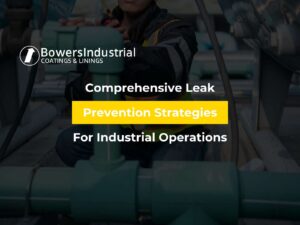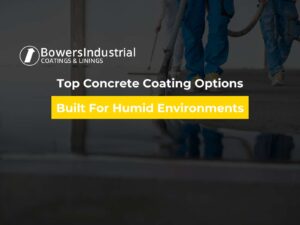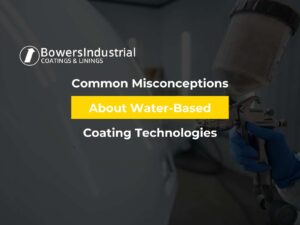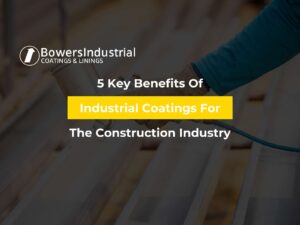Identifying The Main Causes Of Industrial Leaks
Industrial operations must ensure the highest safety standards. This is especially true for those that rely on fluid transport, where the reliability of piping systems, tanks, and pressure vessels must be absolute. Otherwise, operations risk extended downtime, financial losses, environmental hazards, and threats to human health.
Beyond routine maintenance, the real key lies in comprehensive leak prevention. That means developing a strategy that protects assets and people while reducing costs. This is entirely achievable, especially with solutions like chemical-resistant paint for steel. Before applying solutions like this, it’s essential to understand the main causes of leaks and how to prevent them.
Stopping Leaks Before They Start: Why It Counts
Leaks are more than simple maintenance concerns. They represent operational interruptions, financial loss, and potential regulatory issues. For industries that rely on high-performance systems—whether in petrochemicals, food processing, mining, or power generation—leak prevention offers measurable benefits:
- Reduced downtime and lower repair costs: Avoiding emergency shutdowns through scheduled inspections and preventive maintenance keeps operations running smoothly while cutting major repair expenses.
- Improved safety and regulatory compliance: Minimizing leaks protects workers from hazardous fluids and pressurized systems and ensures adherence to environmental and industry standards.
- Extended equipment lifespan, efficiency, and sustainability: Protective coatings, inspections, and timely repairs prevent failures, conserve pressure and fluid, reduce environmental impact, and support long-term corporate responsibility.
Together, these benefits strengthen operational resilience and long-term profitability, ensuring that systems remain reliable, efficient, and compliant.
Common Causes of Industrial Leaks
To implement effective strategies, it’s important to understand what drives leaks in the first place. The most frequent causes include:
Corrosion & Erosion
Continuous exposure to chemicals, high pressure, and heat gradually weakens pipes and tanks. Corrosion thins metals while erosion from abrasive fluids accelerates wear, eventually creating cracks that lead to leaks. Preventing this requires durable materials, and protective solutions like industrial coatings in Utah, which add resistance to chemical attack and surface damage.
Improper Installation
Many leaks stem from mistakes made during setup. For instance, misaligned flanges, poorly tightened bolts, or misfitted gaskets. These flaws create hidden vulnerabilities that later compromise the system. Using alignment tools, proper training, and thorough inspections ensures leak-free installation from the start.
Mechanical Stress & Vibration
Pipelines exposed to heavy machinery often face constant vibration that loosens joints and bolts. Over time, even small gaps can cause dangerous leaks. Prevention focuses on precision installation, flange alignment tools, and scheduled torque checks to keep connections secure and extend equipment reliability.
Pressure Surges
Unexpected pressure spikes place intense strain on joints, valves, and piping, often causing sudden and significant leaks. Because surges are unpredictable, proactive protection is essential. Isolation tools and surge suppression systems help safeguard critical equipment, reduce operational risks, and keep systems stable under fluctuating working conditions.
Seal & Gasket Deterioration
Seals and gaskets face constant pressure changes and temperature shifts that gradually wear them down. Once weakened, they can no longer maintain a secure connection, leading to costly leaks. Prevention relies on quality sealing compounds, inspections, and timely replacement. For this reason, applying a chemical resistant sealant can extend gasket life and improve protection.
Essential Tools for Leak Prevention
Leak prevention requires specialized tools that ensure equipment is assembled, maintained, and repaired correctly. Some of the most important include:
- Isolation tools: These stop or redirect fluid flow before repairs, making it possible to work on a section of the system without shutting down the entire operation. They reduce product loss, limit environmental risks, and improve worker safety during maintenance.
- Flange spreader tools: Designed to safely separate flanges, these tools give technicians controlled access to gaskets without causing damage. By applying even pressure, they make gasket replacement faster, safer, and more efficient than manual methods.
- Flange alignment tools: Properly aligned flanges are critical for preventing leaks. These tools ensure precise positioning before bolts are tightened, reducing stress on gaskets and minimizing the chance of uneven sealing or premature failures.
- Leak sealing compounds: When unexpected leaks occur, these compounds provide a quick temporary solution. Available in epoxy, polymer, and high-temperature formulations, they can be applied directly to leaking surfaces to create a seal until permanent repairs are made.
Together, these tools provide industries with safer, more reliable, and faster maintenance operations.
How Protective Coatings Safeguard Against Leaks
One of the most effective strategies for reducing leaks is applying protective coatings that resist chemicals, abrasion, and extreme temperatures. These coatings extend the service life of equipment and provide an additional layer of defense against harsh industrial environments. For example:
- Pipelines exposed to corrosive substances benefit from specialized industrial pipe coating solutions, for example.
- Storage tanks containing aggressive fluids can be protected with industrial tank linings.
- Floors in chemical plants remain safer and easier to maintain with heavy-duty sealers.
Selecting the right coating reduces long-term repair costs and helps prevent structural weaknesses that could lead to leaks.
Step-by-Step Leak Prevention Program
Organizations that succeed in reducing leaks typically follow a structured program:
1. Risk Assessment
Not all assets face the same level of exposure. Corrosive environments, heavy vibration, or high-pressure systems demand closer attention. For example, conducting a structured risk assessment helps prioritize resources, focusing maintenance on areas where leaks are most likely to occur.
2. Targeted Coating Applications
Protective coatings play a decisive role in long-term reliability. Applying specialized solutions, such as chemical resistant epoxy paint, to equipment that handles aggressive fluids shields surfaces from premature deterioration. This targeted approach extends service life while reducing the frequency of repairs.
3. Emergency Readiness
Even with strong preventive measures, leaks can still occur. Being prepared with isolation tools and leak sealing compounds allows teams to respond quickly and safely. Readiness reduces downtime and ensures that temporary solutions can be applied until permanent repairs are made.
4. Post-Repair Testing
Once repairs are complete, thorough testing confirms overall system integrity. Hydrostatic or pneumatic pressure tests, along with advanced monitoring and diagnostic methods, carefully verify that the fix is fully effective. This final step ensures long-term reliability and prevents recurring operational issues.
Industrial Leak Prevention Examples Across Different Sectors
Different industries face unique challenges when it comes to leaks. For example:
- Petrochemical facilities: Corrosion is a constant threat, requiring protective coatings and frequent monitoring.
- Food & beverage plants: Leaks can compromise hygiene and lead to product contamination, making sealing integrity a top priority.
- Power generation: High-pressure industrial systems demand reliable flanges and regular torque checks for optimal performance.
- Mining operations: Abrasive slurries require both durable piping and abrasion resistant coatings to prevent rapid wear.
Ultimately, the best way to achieve the highest level of safety while saving money is to invest in leak prevention tools. In the future, you’ll be glad you took the necessary steps to prevent bigger problems!
How To Achieve Long-Term Leak-Free Industrial Operations
Preventing leaks is far more than a one-time task. It requires a commitment to acknowledge that failures can happen while making every effort to minimize their likelihood. That’s why it’s essential to rely on measures that deliver long-term results!
If you want to reduce risks, there’s nothing better than having a partner who supports you throughout the entire process. At Bowers Industrial, we bring over 80 years of experience in coatings, linings, and sealing technologies. Want to know how we can help protect your operations from costly leaks? Contact us today!

Bowers Industrial Coatings & Linings
2381 S 2700 W, Unit B
West Valley City, UT 84119
Tel: 801-977-0508
Email: [email protected]





